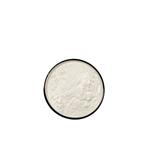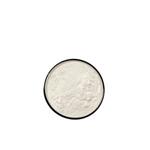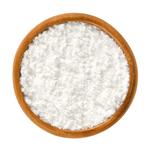Description
D-Psicose, an epimer of d-fructose at position C3, is a rare sugar found in extremely small quantities in commercial carbohydrates or agricultural products. Psicose has been found in wheat, Itea plants, and processed cane and beet molasses. It is also present in small quantities in commercial complexes of d-glucose and d-fructose. It is 70% as sweet as sucrose (when compared to 10% solutions), and the caloric value is reported to be 0.007 kcal/g. Psicose is poorly absorbed in the digestive tract and has zero energy for growth; therefore, it may be useful as a low-calorie sweetener.
Definition
ChEBI: D-psicose is the D-enantiomer of psicose. It has a role as an antilipemic drug, an antioxidant, a hypoglycemic agent and a plant metabolite. It is an enantiomer of a L-psicose.
Preparation
Psicose is manufactured commercially using d-psicose-3-epimerase from A. tumefaciens. A fructose solution is treated with immobilized, nonviable C. glutamicum cells harboring the enzyme, and it takes 4–8 h at 50°C to convert fructose to psicose. The psicose solution is purified with active carbon, ion exclusion chromatography, and crystallization.
benefits
Psicose can reduce blood glucose levels. Hossain et al. (2011) reported that the supplementation of psicose in the diet reduced the postprandial glycemic response and improved insulin sensitivity and glucose tolerance. Psicose might also be useful in the treatment of neurodegenerative and atherosclerosis diseases. The addition of psicose in food products could improve the gelling behaviour and produce good flavour through Maillard reactions with food proteins, such as dried egg white and ovalbumin. Sun et al. (2008) reported that psicose improved the quality of butter cookies by enhancing the foaming properties of egg white protein. It was granted GRAS status by the FDA in 2011 and approved as an ingredient for various foods and dietary supplements.



